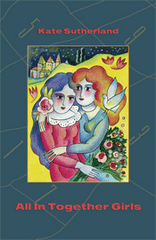Ecco's book [translated by Andrew Bromfield] has one possible selling point for a novel infamous for its length: It's more than 400 pages shorter than the so-called canonical version, in part because it lacks many of the philosophical digressions and historical observations Tolstoy added later. Also, its story has some twists, since Tolstoy changed the fates of some characters, including killing off several between drafts.
Faced with this sort of choice, my inclination, at least for my first go round, is to go with whichever version the author regarded as the final work. But according to an expert quoted at the conclusion of the article, Tolstoy himself never expressed a clear view on that point:
"There is no definitive edition," says New York University's Anne Lounsbery, assistant professor and director of graduate studies in the department of Russian and Slavic Studies. She adds, "Tolstoy himself didn't take much interest in it after he wrote it. He allowed interventions by all sorts of people."
I'm still inclined to think that the Pevear and Volokhonsky translation is the one for me, but perhaps I ought to undertake a bit of research before making the final call. Certainly the foregoing indicates what a complicated business selecting a translation can be.

6 comments:
Oh, my, Tolstoy's indifference about which version is final would be difficult to deal with -- I really can't imagine not taking much interest in what becomes the final version of one's novel!
I find that difficult to get my head around as well. Surely he wouldn't have made those changes, or at least not gone public with them, if he didn't think they improved the text? I think I'm going to have to do a bit of research to learn about the circumstances surrounding the changes.
I went through this exercise last summer, when I decided to read W&P. The Constance Garnett one is the most available, being online and all, and is quite serviceable. But when I learnt that Tolstoy himself didn't have a final version, I decided I would make my choice purely on the basis of availability and aesthetics - which ruled out the cheapo Dover edition immediately. I was quite keen to read the translation by the Maudes (as Tolstoy himself approved of it) but could not find a nice looking copy.
I went with the Penguin Briggs version, and was happy with my choice - despite complaints about some lack of authenticity (in the Guardian in October 2005, by a fellow called Thirwell).
Go with the Maude's version. If you can find the "Inner Sanctum" edition of 1943 it has multiple helpful footnotes and an extremely handy pull-out guide of family groups, characters, maps, etc, which is invaluable at first when you're still figuring out who everybody is. Soon enough you'll be enthralled and it'll be like watching the best serial TV show you ever saw.
You might read my review of War and Peace in my blog at www.gaiawriter.blogspot.com last month - Bromfield's version is definitely best for beginners, full of charm, humor, and the tenderness of the early Tolstoy, and none of the bittnerness or lecturing of the latter man.
Good post, very interesting
Post a Comment